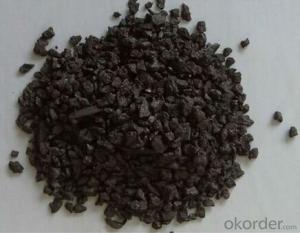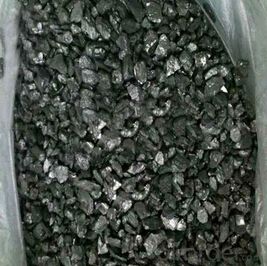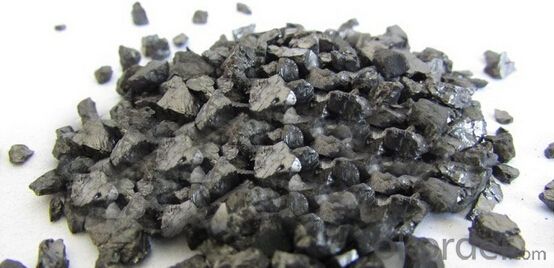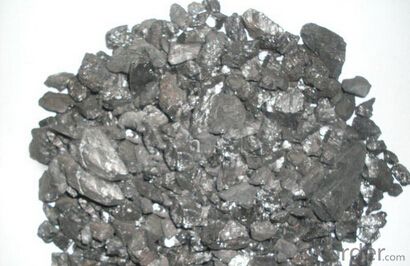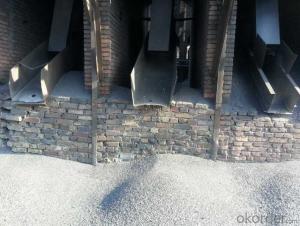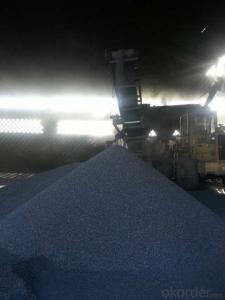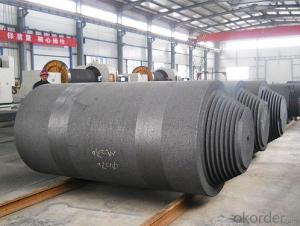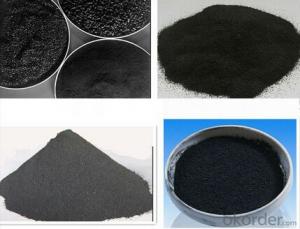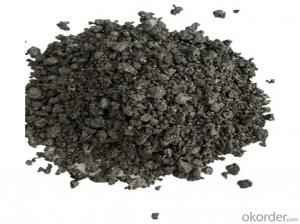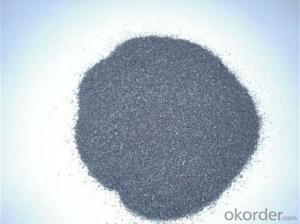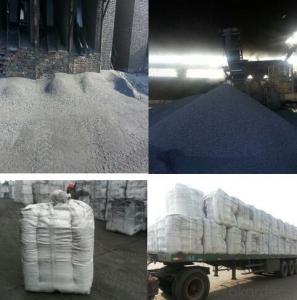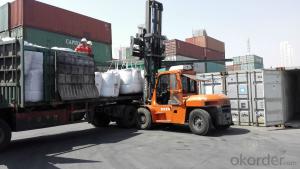Recarburizer Graphite Petroleum Coke 93% 94% Calcined anthracite
- Loading Port:
- Dalian
- Payment Terms:
- TT OR LC
- Min Order Qty:
- 10 m.t
- Supply Capability:
- 500000 m.t/month
OKorder Service Pledge
OKorder Financial Service
You Might Also Like
Specification:
Low Sulphur Calcined Petroleum Coke/Calcined Anthracite /CPC
We can manufacture the high quality product according to customers' requirements or drawings
Advantage:
- Reduce energy consumption
- Reduce recarburizer consumption
- Reduce scrap rate
- Reduce tap to tap time
- Reduce scrap rate
We can offer carburant in differnt types,whenever you need,just feel free to contact us
Data Sheet:
NO. | Fixed Carbon | Sulphur | Moisture | Volatile | Graininess |
>= | <=< span=""> | <=< span=""> | <=< span=""> | Granularity distribution 90% | |
Oz1011 | 98.50% | 0.05% | 0.50% | 0.50% | 1-5mm |
Oz1012 | 98.50% | 0.50% | 0.50% | 0.80% | 1-5mm |
Oz1013 | 95.00% | 0.30% | 0.26% | 1.14% | 1-4mm |
Oz1014 | 90.00% | 0.30% | 0.30% | 0.90% | 1-5mm |
Oz1015 | 80.00% | 0.20% | 1.30% | 3.50% | 1-5mm
|

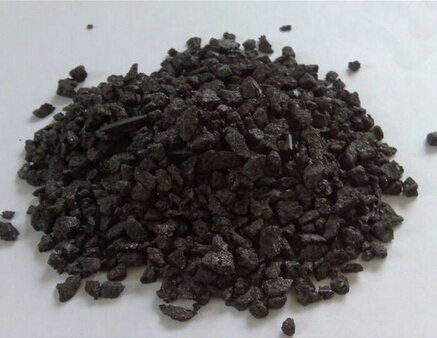
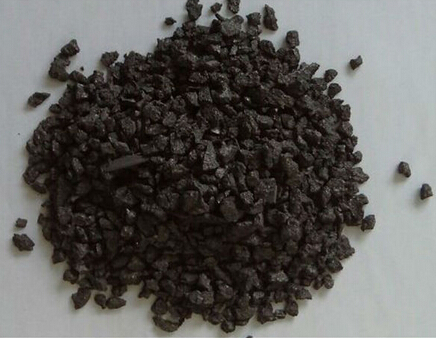
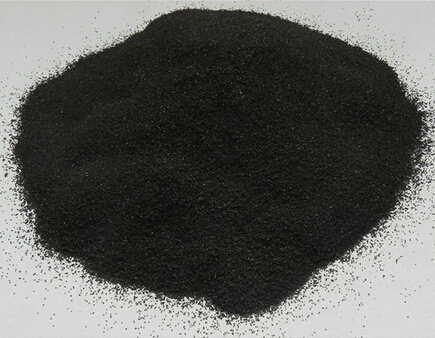
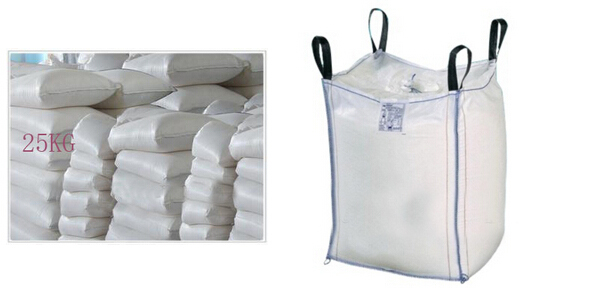
- Q: What do you stand for?Tar, smoke, nicotine, and carbon monoxide. What do you mean? What's the size of the smoke, or the size of the smoke? What's the connection? Smoking is harmful, so how do you choose to smoke smaller cigarettes?
- Compared with the 1mg now, but the taste of light to you simply don't get things, unable to meet the physiological needs, will be more big. So the deep harm than simple 5mg smoke into the lungs and then exhale.Just feel well enough on the line. This was something very mysterious, you can go to a professional ask smoking community. Um. Provide a product Baidu search on it. Is a product tasting tea smoke forum.
- Q: How is carbon used in the production of fuel cells?
- Fuel cells utilize carbon in various ways during their production. The construction of electrodes is one of the primary applications of carbon in fuel cells. These electrodes, which consist of an anode and a cathode, are commonly made from carbon-based materials like graphite or carbon paper. These materials enable the electrochemical reactions within the fuel cell to occur by offering a conductive surface. Furthermore, carbon serves as a catalyst in fuel cells. Catalysts are substances that accelerate chemical reactions without being consumed in the process. Carbon-based catalysts, such as platinum or palladium, are frequently employed in fuel cells to facilitate the reactions that generate electricity. These catalysts enhance the efficiency of fuel-to-electricity conversion. Moreover, carbon is employed in the form of carbon nanotubes during fuel cell production. Carbon nanotubes exhibit unique properties such as high surface area and exceptional electrical conductivity, making them ideal for enhancing fuel cell performance. By providing a larger surface area for reactions to occur on, carbon nanotubes can improve the efficiency of fuel cell reactions. In summary, carbon plays a vital role in fuel cell production by providing the necessary materials for electrode construction, acting as catalysts for electrochemical reactions, and enhancing fuel cell performance through the utilization of carbon nanotubes.
- Q: What are the consequences of increased carbon emissions on human health?
- Increased carbon emissions have significant consequences on human health. One of the most immediate impacts is the deterioration of air quality. Carbon emissions contribute to the formation of harmful air pollutants, such as particulate matter, nitrogen oxides, and ground-level ozone. These pollutants can cause respiratory problems, such as asthma, bronchitis, and other chronic obstructive pulmonary diseases. They can also exacerbate existing respiratory conditions, leading to increased hospitalizations and premature deaths. Furthermore, carbon emissions contribute to the phenomenon of climate change, which has far-reaching effects on human health. Rising temperatures can exacerbate the occurrence and intensity of heatwaves, leading to heat-related illnesses and deaths. Heat stress also affects vulnerable populations, such as the elderly, children, and those with pre-existing health conditions. Climate change also impacts the spread of infectious diseases. Warmer temperatures and changing rainfall patterns can alter the distribution and behavior of disease-carrying vectors like mosquitoes and ticks. This can result in the increased transmission of vector-borne diseases, such as malaria, dengue fever, and Lyme disease. Additionally, climate change can disrupt food and water supplies, leading to malnutrition and an increased risk of waterborne diseases. Another consequence of carbon emissions is the increased occurrence of natural disasters, such as hurricanes, floods, and wildfires. These events can cause physical injuries, displacement, and mental health issues, such as post-traumatic stress disorder. The destruction of healthcare infrastructure during disasters also hampers access to necessary medical care, exacerbating health issues. It is important to note that the consequences of increased carbon emissions on human health disproportionately affect vulnerable populations, including low-income communities, indigenous communities, and developing countries. These groups often have limited access to healthcare, making them more susceptible to the health impacts of carbon emissions. In conclusion, increased carbon emissions have severe consequences on human health. From deteriorating air quality to the spread of infectious diseases and the occurrence of natural disasters, the impacts are wide-ranging and pose significant risks to individuals and communities. It is crucial to mitigate carbon emissions and invest in sustainable practices to safeguard human health and create a healthier and more sustainable future.
- Q: What are the benefits of carbon-neutral technologies?
- Carbon-neutral technologies play a crucial role in addressing climate change and creating a sustainable future due to their numerous benefits. Firstly, these technologies effectively reduce greenhouse gas emissions, especially carbon dioxide, which is the primary contributor to global warming. By transitioning to carbon-neutral technologies, we can significantly decrease our carbon footprint and mitigate the adverse effects of climate change. Secondly, carbon-neutral technologies promote energy efficiency and the conservation of resources. Many of these technologies, such as solar and wind power, utilize endless and easily accessible natural resources. This reduces our dependence on finite fossil fuels, thus safeguarding the environment and enhancing energy price stability. Moreover, embracing carbon-neutral technologies leads to improved air quality and public health. Conventional energy sources like coal and oil contribute to air pollution and have detrimental effects on human health, including respiratory and cardiovascular issues. By adopting cleaner technologies, we can reduce air pollution and enhance the well-being of individuals and communities. Additionally, carbon-neutral technologies can stimulate economic growth and create job opportunities. The development, installation, and maintenance of renewable energy infrastructure require skilled workers, leading to job creation and economic development. This transition also reduces reliance on imported energy sources, thereby enhancing energy independence and national security. Lastly, by embracing carbon-neutral technologies, we can demonstrate global leadership and contribute to international efforts in combating climate change. Countries that adopt these technologies serve as role models for others and encourage global cooperation in reducing greenhouse gas emissions. In conclusion, carbon-neutral technologies offer a wide range of benefits that are multidimensional. They not only help mitigate climate change and reduce greenhouse gas emissions but also promote energy efficiency, enhance air quality, stimulate economic growth, and contribute to global efforts in creating a sustainable future.
- Q: What are the consequences of increased carbon emissions on cultural heritage sites?
- The impact of increased carbon emissions on cultural heritage sites can be significant. One immediate and visible effect is the degradation of physical structures and artifacts. Carbon emissions contribute to air pollution, leading to the formation of acid rain. This acid rain contains high levels of sulfuric and nitric acids, which corrode and erode materials like stone, metal, and paint. Consequently, historic buildings, monuments, and sculptures can deteriorate and lose their original color. Moreover, carbon emissions also contribute to climate change, resulting in more frequent and severe weather events such as hurricanes, floods, and wildfires. These extreme weather events directly threaten cultural heritage sites, causing physical damage and even destruction. For instance, rising sea levels due to climate change erode coastal archaeological sites, leading to the loss of valuable historical artifacts and structures. Additionally, increased carbon emissions pose a threat to the intangible aspects of cultural heritage. Climate change disrupts ecosystems and biodiversity, impacting the natural surroundings of cultural sites. As a result, traditional knowledge, practices, and cultural landscapes linked to these sites can be lost. Changing environmental conditions may force indigenous communities to lose their ancestral lands and sacred sites. Furthermore, cultural heritage sites heavily rely on tourism for income and conservation funding. However, increased carbon emissions contribute to global warming, which alters travel patterns and preferences. Consequently, there may be a decline in tourist visits to these sites, impacting local economies and hindering conservation efforts. In conclusion, the consequences of increased carbon emissions on cultural heritage sites are diverse and far-reaching. It is essential to address and mitigate these emissions through sustainable practices and policies to safeguard and preserve our shared cultural heritage for future generations.
- Q: How does carbon impact the fertility of soil?
- Carbon plays a crucial role in the fertility of soil as it is the foundation of organic matter, which is vital for soil health and productivity. When carbon-rich organic matter, such as decaying plant and animal residues, is added to the soil, it helps improve its structure, nutrient-holding capacity, and water retention. This, in turn, enhances the soil's ability to support plant growth and sustain microbial activity. Organic matter serves as a source of carbon for soil microorganisms, fungi, and bacteria, which decompose it and release nutrients for plants. This decomposition process, known as mineralization, releases essential macronutrients (nitrogen, phosphorus, and potassium) and micronutrients into the soil, making them available for plant uptake. Additionally, carbon in organic matter helps bind soil particles together, improving soil structure and preventing erosion. Moreover, carbon improves the soil's water-holding capacity, reducing the risk of drought stress for plants. It acts as a sponge, absorbing and retaining moisture, which helps to sustain plant growth during dry periods. Carbon also promotes the development of a healthy and diverse soil microbial community, including beneficial bacteria and fungi. These microorganisms enhance nutrient cycling, disease suppression, and plant nutrient uptake, further contributing to soil fertility. However, excessive carbon inputs, such as from excessive organic matter addition or improper land management practices, can have negative effects on soil fertility. An imbalance in carbon availability can lead to nitrogen immobilization, where soil microorganisms consume nitrogen for their own growth, depriving plants of this essential nutrient. Additionally, high carbon content can create anaerobic conditions, reducing the availability of oxygen for plant roots and beneficial soil organisms. In summary, carbon is essential for maintaining soil fertility as it improves soil structure, nutrient availability, water retention, and microbial activity. However, it is crucial to maintain a balanced carbon-to-nitrogen ratio and adopt sustainable land management practices to ensure the optimal fertility of soil.
- Q: How does carbon impact the prevalence of cyclones?
- The prevalence of cyclones is significantly affected by carbon emissions and the subsequent increase in atmospheric carbon dioxide levels. Cyclones, which are also referred to as hurricanes or typhoons, are powerful and destructive weather phenomena that originate over warm ocean waters. The alteration of climate patterns and global warming caused by the increased carbon in the atmosphere, primarily resulting from human activities like burning fossil fuels, play a major role in this. The provision of necessary fuel for cyclones to form and intensify is made possible by the warmer ocean temperatures caused by carbon emissions. As heat is trapped in the atmosphere by carbon dioxide, the surface of the oceans warms up, creating a favorable environment for cyclone development. The availability of more energy for cyclones to grow and become more destructive is directly proportional to the warmth of the ocean waters. Furthermore, carbon emissions contribute to the alteration of climate patterns, leading to changes in atmospheric circulation patterns. These changes have the potential to influence the frequency, intensity, and track of cyclones. Although it is challenging to attribute individual cyclones to carbon emissions, scientific studies indicate that the overall increase in carbon dioxide levels is contributing to a greater number of severe cyclones in specific regions. In addition, the impact of cyclones can be exacerbated by rising sea levels associated with global warming and carbon emissions. Higher sea levels result in an increased storm surge, which is the abnormal rise in water level during a cyclone. This storm surge can cause devastating flooding in coastal areas, resulting in significant infrastructure damage and loss of life. To conclude, the prevalence of cyclones is profoundly affected by carbon emissions. The increased atmospheric carbon dioxide levels result in warmer ocean temperatures, creating a more favorable environment for cyclone formation and intensification. Changes in climate patterns caused by carbon emissions also impact the frequency and track of cyclones. Furthermore, the rising sea levels associated with global warming can worsen the impact of cyclones through increased storm surge. It is crucial for society to address carbon emissions and work towards sustainable solutions in order to mitigate the impacts of cyclones and other severe weather events.
- Q: What is carbon capture and storage?
- Carbon capture and storage (CCS) is a process that involves capturing carbon dioxide emissions from industrial sources, such as power plants, and storing them underground or using them for various purposes. It aims to mitigate the release of greenhouse gases into the atmosphere, helping to combat climate change by reducing carbon dioxide levels.
- Q: What are the different methods of measuring carbon dioxide levels in the atmosphere?
- Some of the different methods of measuring carbon dioxide levels in the atmosphere include: 1) Ground-based stations: These are fixed monitoring stations that collect air samples and measure carbon dioxide concentrations using gas analyzers. 2) Aircraft measurements: Scientists use aircraft equipped with sensors to sample air at different altitudes and locations to gather data on carbon dioxide levels. 3) Satellite observations: Satellites equipped with remote sensing instruments measure the concentration of carbon dioxide in the atmosphere from space. 4) Oceanic measurements: Researchers collect water samples from various depths in the ocean to analyze carbon dioxide levels and understand its absorption by the oceans. 5) Ice core analysis: By drilling and analyzing ice cores from glaciers and ice sheets, scientists can reconstruct carbon dioxide levels over thousands of years. These methods provide complementary data to understand the distribution and changes in carbon dioxide levels in the atmosphere.
- Q: The victory of the lightning 3361 material is full of carbon fiber, and the 3363 is made of carbon fiber and resin, which is better??
- HelloThese two rackets are a good choice for beginners, and the price is almost the same. In theory, of course, the resin + carbon fiber is better. Carbon fiber increases the hardness of the racket, while the resin increases the toughness of the racket. Therefore, this kind of racket is softer than the center pole, suits the defensive and the ball control type. However, 3363 people as a basic racket, is not on the resin have too many requirements, as mentioned above, the content of resin may be less than 5%, which is why the two price is almost the sake of racket.My suggestion is that the landlord to buy carbon fiber 3361, first, this time longer, very popular, reputation has been good, two is 3363, some people feel too soft, the ball is not far away, with a very uncomfortable feeling. Of course, it depends on the characteristics of the landlord himself.I hope that the answer can help to you, I hope you join our team "badminton kingdom", to create our own kingdom of badminton!
Send your message to us
Recarburizer Graphite Petroleum Coke 93% 94% Calcined anthracite
- Loading Port:
- Dalian
- Payment Terms:
- TT OR LC
- Min Order Qty:
- 10 m.t
- Supply Capability:
- 500000 m.t/month
OKorder Service Pledge
OKorder Financial Service
Similar products
Hot products
Hot Searches
Related keywords
